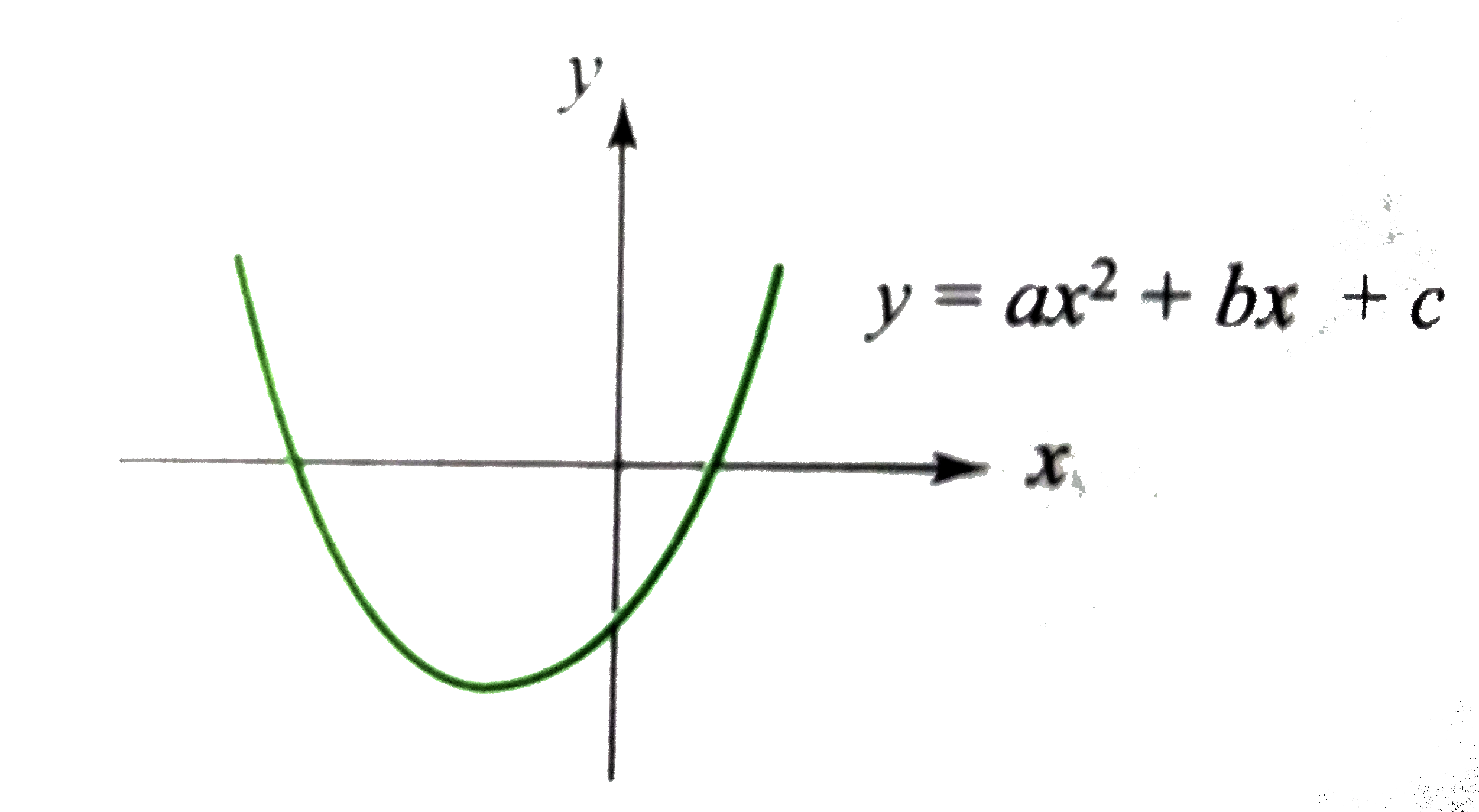Let f(x)=ax2+bx+⋅ Consider the following diagram. Then Fig c<0 b>0 a+b−c>0 abc<0
To solve the problem, we need to find the midpoint of the chord QR formed by the intersection of the tangent to the parabola y2=8x at the point (2, 4) and the parabola y2=8x+5. Here are the steps to arrive at the solution:
Step 1: Write down the equations of the parabolas
The equations of the parabolas are:
1. y2=8x (Equation 1)
2. y2=8x+5 (Equation 2)
Step 2: Find the equation of the tangent at the point (2, 4)
The general form of the tangent to the parabola y2=4ax at the point (x1,y1) is given by:
yy1=2a(x+x1)
For the parabola y2=8x, we have a=2 (since 4a=8). Substituting x1=2 and y1=4:
y⋅4=8(x+2)
Simplifying this, we get:
4y=8x+16⇒y=2x+4(Equation 3)
Step 3: Find the points of intersection of Equation 3 and Equation 2
Substituting y=2x+4 into Equation 2:
(2x+4)2=8x+5
Expanding the left side:
4x2+16x+16=8x+5
Rearranging gives:
4x2+8x+11=0
Step 4: Solve the quadratic equation for x
Using the quadratic formula x=−b±√b2−4ac2a:
Here, a=4, b=8, and c=11:
x=−8±√82−4⋅4⋅112⋅4
Calculating the discriminant:
b2−4ac=64−176=−112
Since the discriminant is negative, there are no real solutions for x. This indicates that the tangent does not intersect the second parabola.
Step 5: Conclusion
Since the tangent does not intersect the second parabola, we cannot find points Q and R, and thus cannot find the midpoint of the chord QR.
The equations of the parabolas are:
1. y2=8x (Equation 1)
2. y2=8x+5 (Equation 2)
The general form of the tangent to the parabola y2=4ax at the point (x1,y1) is given by:
yy1=2a(x+x1)
For the parabola y2=8x, we have a=2 (since 4a=8). Substituting x1=2 and y1=4:
y⋅4=8(x+2)
Simplifying this, we get:
4y=8x+16⇒y=2x+4(Equation 3)
Substituting y=2x+4 into Equation 2:
(2x+4)2=8x+5
Expanding the left side:
4x2+16x+16=8x+5
Rearranging gives:
4x2+8x+11=0
Using the quadratic formula x=−b±√b2−4ac2a:
Here, a=4, b=8, and c=11:
x=−8±√82−4⋅4⋅112⋅4
Calculating the discriminant:
b2−4ac=64−176=−112
Since the discriminant is negative, there are no real solutions for x. This indicates that the tangent does not intersect the second parabola.
Since the tangent does not intersect the second parabola, we cannot find points Q and R, and thus cannot find the midpoint of the chord QR.
Topper's Solved these Questions
Similar Questions
Let f(x)=ax2+bx+⋅ Consider the following diagram. Then Fig c<0 b>0 a+b−c>0 abc<0
View SolutionLet f(X)=ax2+bx+c. Consider the following diagram
 .
.
View SolutionLet f(x)=ax2−bx+c2,b≠0andf(x)≠0 for all x∈R. Then
View SolutionIf fig shows the graph of f(x)=ax2+bx+c,then Fig a. c<0 b. bc>0 c. ab>0 d. abc<0
View SolutionLet the parabolas y=x(c−x)andy=x2+ax+b touch each other at the point (1,0). Then (a) a+b+c=0 (b) a+b=2 (c) b−c=1 (d) a+c=−2
View SolutionLet f(x)=ax2−bx+c2,b≠0 and f(x)≠0 for all x∈R. Then (a) a+c2<b (b) 4a+c2>2b (c) a−3b+c2<0 (d) none of these
View SolutionSolve the following determinant equation: ∣∣ ∣∣x+abccx+baabx+c∣∣ ∣∣=0
View SolutionLet f(x)=(1+b2)x2+2bx+1 and let m(b) the minimum value of f(x) as b varies, the range of m(b) is (A) [0,1] (B) (0,12] (C) [12,1] (D) (0,1]
View SolutionLet f(x) be a continuous function such that f(a−x)+f(x)=0 for all x∈[0,a]. Then ∫a0dx1+ef(x)= (A) a (B) a2 (C) 12f(a) (D) none of these
View SolutionLet f(x)=a+b|x|+c|x|2, where a,b,c are real constants. The, f'(0) exists if
View Solution
